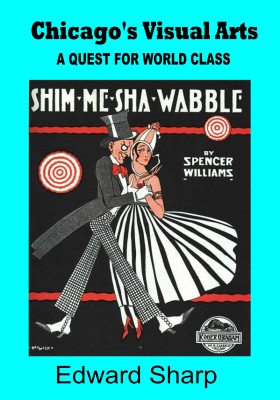On Friday, October 4th, WTTW premiered their new art history program Art and Design in Chicago, sponsored by the Terra Foundation for American Art and the Driehaus Foundation. Kudos to all for their good intentions. Chicago’s contributions in the visual arts is a worthy topic for examination although the visual arts are always difficult to present in such a manner as to pique the average viewer’s interests. It can appear as dry as a college lecture in monotone. They are meant to put you asleep/
Despite the admirable intentions, if episode one of the four part series is any indication, you will learn more about Chicago’s liberal political orientation and artistic elitism than about Chicago’s contributions to American culture. The history of Chicago art is presented by its art organizations instead of in a chronological order of art movements. Lorado Taft’s studio at the University of Chicago, the School of the Art Institute, the Hyde Park Art Center, and the South Side Community Art Center are profiled. These institutions all welcomed Blacks and women and encouraged them to follow their desires. That is a history of which to be proud, yes diversity is our strength, but we are still learning more about the artists and little about the art or Chicago’s unique art history. It is more about “our values” than “our art.”
The third part of the four part series had a welcomed surprise: they actually broached the subject of commercial art. Chicago has not known that much success in the fine art branch of art, certainly not as much as in music, architecture, literature and even theater; but in commercial art Chicago has had an national impact which is little known and rarely acknowledged even in Chicago. Art and Design did present Joe Sedelmaier’s creative “where’s the beef” commercial that became a national sensation but there is so much more; commercial art that is, not beef. Chicago’s commercial artists were responsible for much of the iconography of the American Christmas from the look of Santa Claus to the story traditions such as the underdog reindeer with his luminous proboscis who saved Santa.
A four-part, two hour show, of course, can only present so much but there seemed to be a thread that was missing, something to bind the program together, to give it a theme or purpose. It started with the World’s Fair of 1893 which was a significant event but it was not the beginning of Chicago’s art community or its art history. They ignored the Exposition of 1933 which played a pivotal role in modern American design, in fact, despite the title of Art and Design, there was virtually nothing about design. The relationship between Chicago’s artist community and its major art institutions went unexplored. The program was disjointed, it just seemed to be an excuse to showcase a black or female artists or their institutions and the irony is, some of the most influential Chicago commercial artists that they ignored, were in fact, women.
For an alternative view of Chicago art history read:


Recent Comments